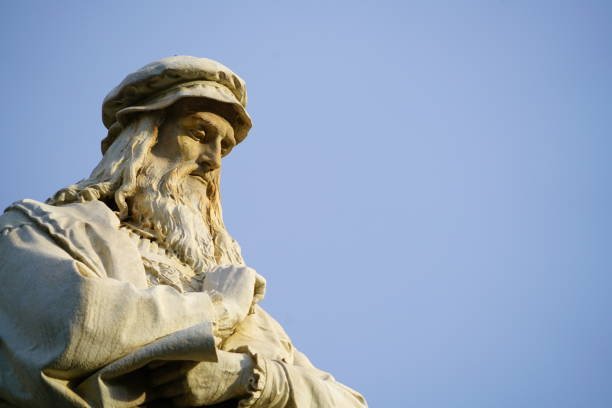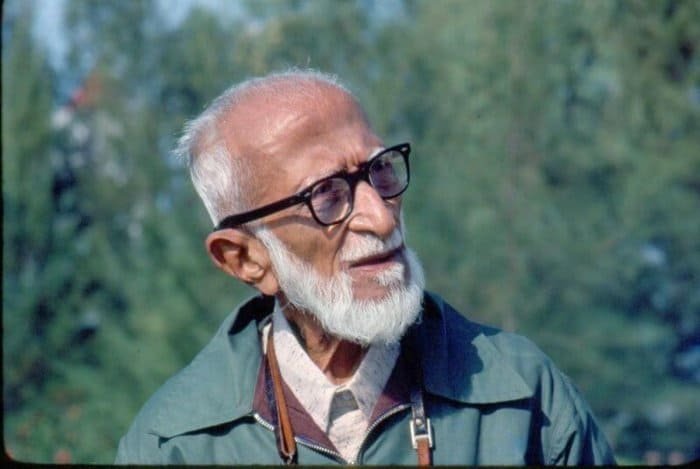
Leonardo da Vinci Biography, Life & Quotes - The Art Story.
Leonardo da VinciLeonardo da Vinci was born in a village called Vinci in Florence, Italy. Their clan was named after this village. He was an illegitimate son. Along with physical beauty and vigor, he had the qualities of attractiveness of nature, tact and proficiency in intellectual subjects. The Italian was a great painter, sculptor, architect, musician, skilled mechanical engineer, and scientist
| Full Name | Leonardo da Vinci |
| Birth Date | 15 April 1452 |
| Birth Place | Vinci, Italy |
| Profession | painter |
| Political Party | - |
| Other Political Affiliations | - |
| Nationality | italian |
| Hometown | Tuscany |
| Religion | Christian/Roman Catholic/Non-believer (subject to research and controversy) |
| Caste | - |
| Marital Status | Single |
| Zodiac Sign | Taurus |
| Death | 2 May 1519 |
Early Life
Leonardo da Vinci was a rare genius in his own right. It would not be an exaggeration to say that the talent of ten people was hidden in him alone. Leonardo da Vinci was born on 15 April 1452 in Vinci, near the famous Italian city of Florence. His father was a famous lawyer and mother was once a maid in Vinci's inn. Leonardo da Vinci's childhood was spent in his grandfather's house.
In 1469, Leonardo da Vinci's father came with him to Florence, where his aunt took care of him for many years. His education initiation was completed in Florence itself. Leonardo da Vinci's talent started to emerge from the school itself, while he used to solve the most difficult problems of mathematics in a jiffy. By 1482 AD, he had received education in various subjects. It is believed that Leonardo da Vinci's mother gave birth to the illegitimate son of the lawyer. After handing over her son to her father, the woman had married a builder.
When he was only 14 years old, suddenly the hobby of making idols emerged in his mind. At this age, he made such idols which were admired by all. When he had completed his education, he had no source of income. As a child, he used to get lost in the picturesque views of nature. He loved animals so much that he was vegetarian.
In his childhood, he was identified with Virocchio, from whom he received training in painting, sculpture, architecture, engineering arts. Virocchio was overjoyed to see his dedication and hard work. Over time, Leonardo used innovative techniques in his paintings. While making a picture of an object, he presented the picture of light and shadow falling on it in different angles and in different quantities in such a way that people were forced to press their fingers under the teeth.
Leonardo began to practice a variety of subjects from a young age, but among these were music, painting and sculpture. His father kept him working under the umbrella of the famous painter, sculptor and goldsmith, Andrea del Verrochio, and then went to the service of Ludovico Sforza, the nobleman of Milan, where his Military engineering and organization of grand court ceremonies were also involved in various activities.
At the age of 30, he went to Milan, Italy, not only did court painting for its ruler, Ludvico Sorza, but also did the work of designing bridges, canals, network of canals, steam-fired cannons for the use of the army. . He made the famous paintings Last Supper and Monalisa by watercolor from wet plaster.
Seeing the beautiful painting of one and a half inch smile of Monalisa adorned in the museum of Paris, everyone does not live without admiring her talent. Leonardo prepared many warlus and models of painting while living in Italy, Rome and France. He invented an alarm clock. Chimney for lamp stay and parachute to descend was also manufactured. The technology of air-conditioned plant was also prepared. He also designed a water-powered shoe, a paddle-powered boat.
Work
It seems that Leonardo wanted to write separate treatises on painting, architecture, anatomy, astrology, optics, hydrodynamics and mechanics, but this work was not completed. Only incomplete articles or comments are available on these subjects. Leonard considered so many scientific subjects and his comments on many of them are so detailed that it is not possible to describe them here. Apart from the above-mentioned subjects, he has expressed original and introductory ideas on many scientific subjects like botany, zoology, physiology, physics, geology, natural geography, climatology, aeronautics etc. Not only were these scholars of mathematics, mechanics and military engineering, you were also a skilled musician.
Leonardo was a fierce opponent of war, but ironically, he had to prepare violent weapons, devices, equipment, etc. The circumstances were so unfavorable that all his paintings, sculptures, models etc. remained incomplete. His designed cities, canals, dams etc. remained on paper only. Later scientists, artists, philosophers considered him as their ideal and embodied the sketches, designs, models etc. His fantasies of those times—such as submarines, helicopters, tanks, spiral stairs, clean cities, wonderful toys—have come true today.
Leonardo da Vinci and his inventions
For 30 years he studied in Florence and kept on doing some work. But his income was very less. In 1482, he wrote a letter to the Duke of Milan. In which he appealed for the job.
The Duke appointed him as an engineer in the army. As an army engineer, Leonardo da Vinci made many new suggestions. In which there were proposals ranging from chemical smoke to weapons equipped with weapons and powerful weapons. He also designed the design of such a weapon. Who could fire bullets at the enemy. Staying in Milan, he also worked as a builder. He presented the designs of many roads, canals, churches, etc.
In 1495, he started making his famous painting " Last Supper" , which was completed in 1497. Leonardo da Vinci came to Venice in 1499. At that time there was a war going on with Turkey. In Venice, he presented many ideas related to war. At that time all the ideas of Leonardo were very expensive in terms of production. Therefore they could not be given work form.
- George Eastman: A Pioneering Entrepreneur and Inventor in Photography
- Isaac Newton - Biography, Facts, Discoveries, Laws
- Dr. Mokshagundam Visvesvaraya: Early Life, Career, Achievements, Contributions, and Legacy
Note: This blog or artical is written on the basis of online research, news paper and AI tools. So, if there is any issue, please mail your feedback.
- Share:








